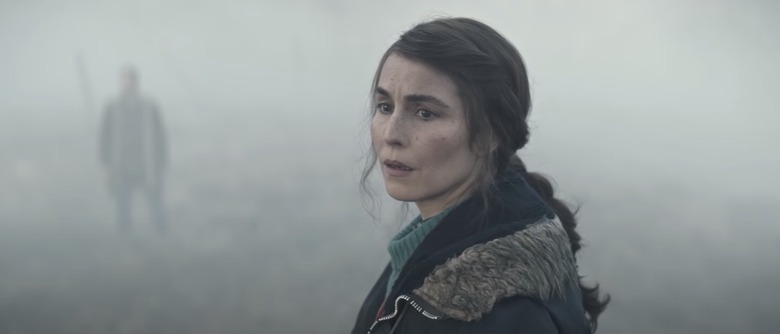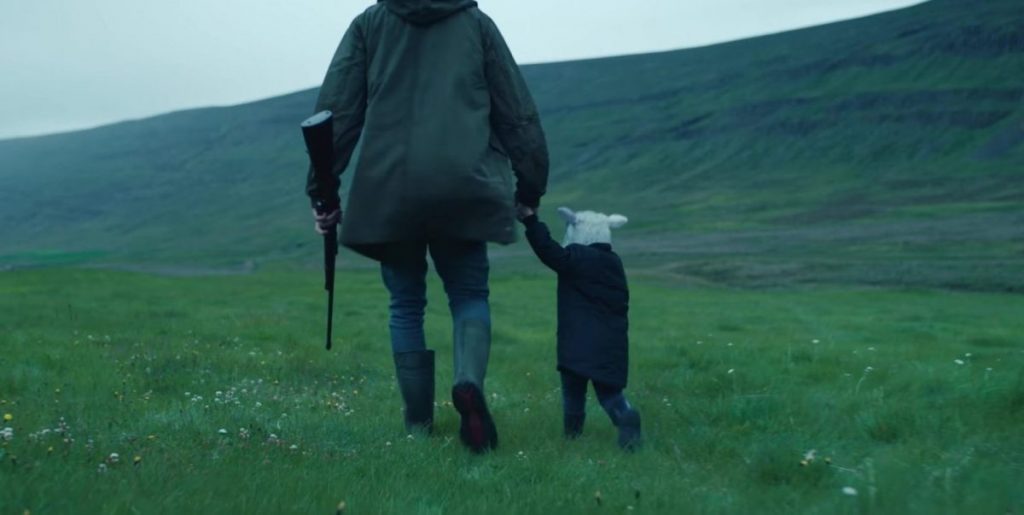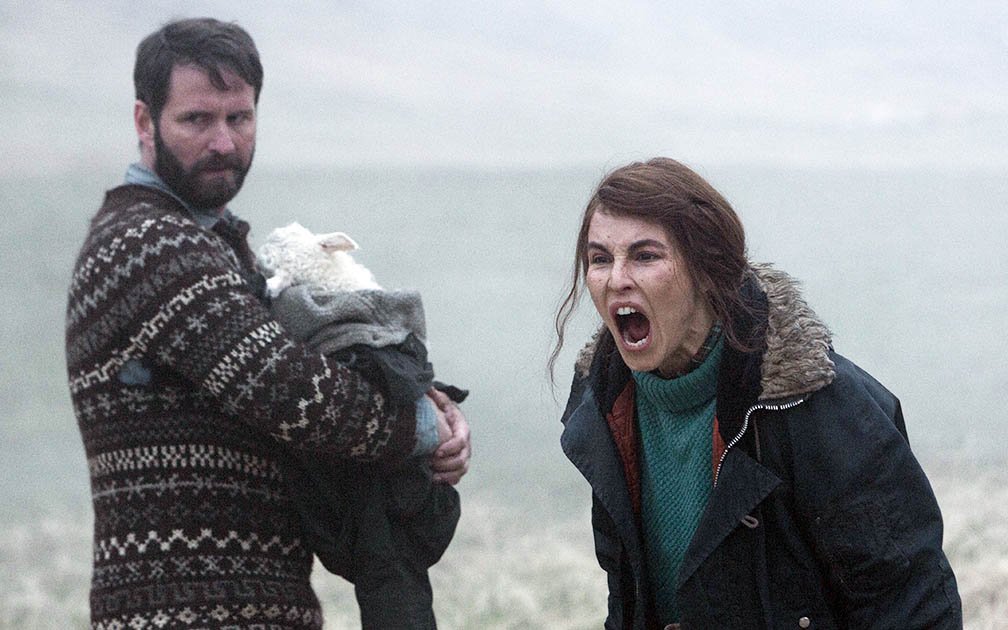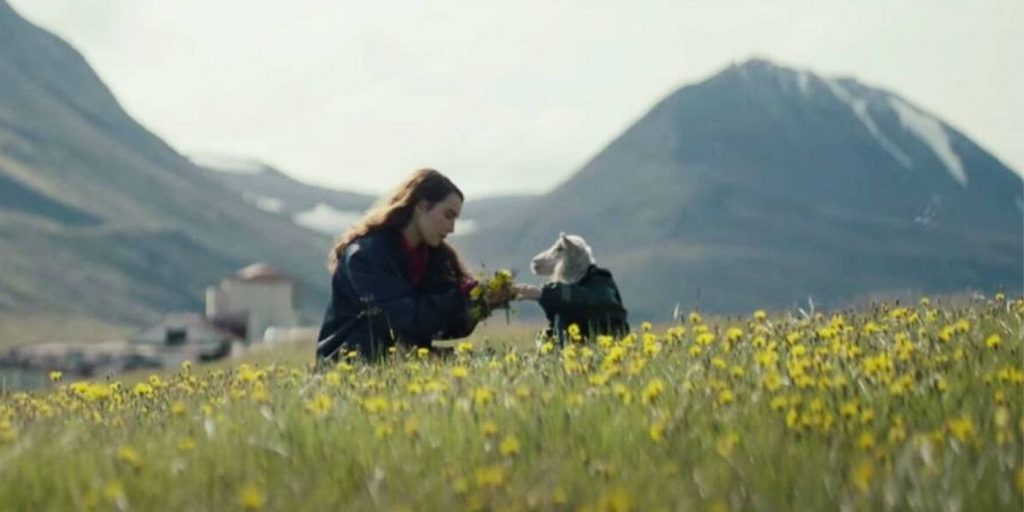Film Review: Lamb (2021)



There’s a heavy sadness hanging over Valdimar Jóhannsson’s Lamb that never quite lets up, even when its characters are at their happiest. This mournful fog is accented by a creeping sense of dread and other-worldly menace that stalks its quarry like only something untamed could. Lamb may be a cold and often dreary film, but its curiosities are so infinitely imaginative and widespread (not to mention capable of producing moments of absolute giddiness) that it makes us believe almost anything is possible. It is an odd film, that much is certain, but how you read its allegory, and whether or not you view its events as literal, delusional, or something in between, may alter your perception of it.

Noomi Rapace (who is brilliance personified as the anxious, doting mother) and Hilmir Snær Guðnason star as María and Ingvar, a childless couple who live alone on a vast Icelandic sheep farm. Monotony and routine fill their dreary days until one afternoon when one of their sheep gives birth to something rather peculiar – that they then decide to keep and raise as their own. What follows is one of the most irresistible, sometimes dark, sometimes joyous displays of nature vs. nurture ever put to film. As natural forces begin to pull at the child (now called Ada, after the couple’s late daughter), and with the arrival of Ingvar’s slacker brother Pétur (Björn Hlynur Haraldsson), circumstances lead to an undoubtedly polarizing finale that will shock some, cause laughter in others, and utterly confuse the rest. (for the record, my reaction was very close to equal parts of each)

But, can we trust our own eyes? Lamb is very good at presenting itself as a literal story (meaning, we believe the proceedings to be real events happening to real people, even if those events are fantastical or impossible), but if viewed through the eyes of grief, depression, or desperation, it’s very possible what we’re seeing isn’t real at all, but a shared delusion accepted by those involved in the interest of fulfillment or bliss. María and Ingvar are good people who are desperately hurting inside. There’s a void in their lives that Ada fills regardless of whether or not she actually is the creature she’s presented to be (how María and Ingvar see her) or just a sheep dressed in child’s clothes (as Pétur, at least at first, sees her). With this in mind, the film’s potentially confounding ending could be seen as an elaborate metaphor for breaking the covenants laid down by animal and man alike, instead of the “seeing is believing” sensory invasion we’re shown.

Personally, I pondered the meaning of Lamb for many days after seeing it. And while I still haven’t come to a definitive conclusion about the events leading up to its rather surprising final moments, I can say that it is one of the most creative and wonderfully majestic movies I’ve seen in some time. It’s a film rich with myth and legend, but also with parable, warning, and grief. To the unimaginative, this wildly abnormal folk-story-meets-family-drama may prove distasteful or even stupid, but those poor souls would be missing out on a wondrous world of vision and inventiveness. Lamb is an astonishing piece of work with the power to intrigue, move, and unnerve all at once.
